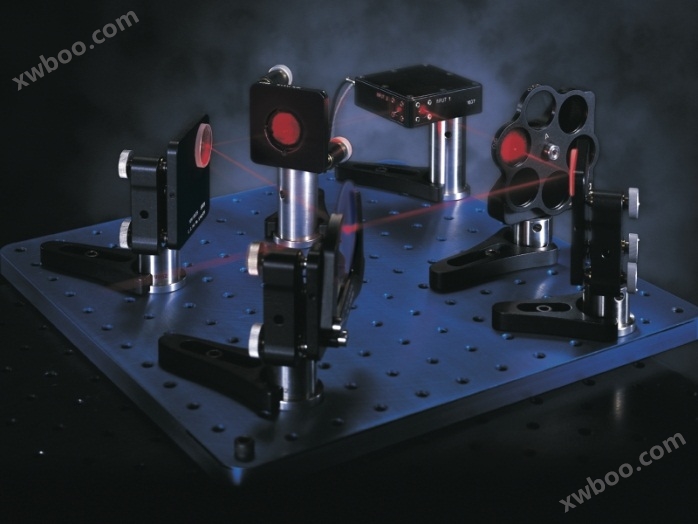650 and 800 MHz balanced optical receivers
650 and 800 MHz balanced light receivers have excellent performance in capturing small signals and are ideal choices for applications such as FM spectroscopy, absorption spectroscopy, or elliptical polarization. These products enable you to eliminate laser intensity noise in any experimental setup that generates reference signals or balanced optical signals without the need for lock-in amplifiers.
Can reduce common mode noise by 25 dB
650 MHz or 800 MHz large bandwidth
Three convenient photoelectric current monitor outputs

contrast |
model |

|
1607-AC-FCBalanced light receiver, silicon, 320-1000 nm, 650 MHz, FC connector
|

|
1607-AC-FSBalanced light receiver, silicon, 320-1000 nm, 650 MHz, selfBy space
|

|
1617-AC-FCBalanced optical receiver, InGaAs, 900-1700 nm, 800 MHz, FC connector
|

|
1617-AC-FSBalanced light receiver, InGaAs,900-1700 nm,800 MHz, free space
|
Product specifications
model |
 1607-AC-FC |
 1607-AC-FS |
 1617-AC-FC |
 1617-AC-FS |
optical input |
FC |
Free Space |
FC |
Free Space |
Detector material |
Silicon |
Silicon |
InGaAs |
InGaAs |
Detector diameter |
0.4 mm |
0.4 mm |
0.1 mm |
0.1 mm |
wavelength range |
320-1000 nm |
320-1000 nm |
900-1700 nm |
900-1700 nm |
3 dB bandwidth |
40 kHz to 650 MHz |
40 kHz to 650 MHz |
40 kHz to 800 MHz |
40 kHz to 800 MHz |
common-mode rejection |
25 dB |
25 dB |
25 dB |
25 dB |
rise time |
800 ps |
800 ps |
800 ps |
800 ps |
**Conversion gain |
350 V/W |
350 V/W |
700 V/W |
700 V/W |
**Cross impedance gain |
700 V/A |
700 V/A |
700 V/A |
700 V/A |
**RF power |
+12 dBm bei 50 Ω |
+12 dBm bei 50 Ω |
+12 dBm bei 50 Ω |
+12 dBm bei 50 Ω |
**Optical power |
4 mW |
4 mW |
2 mW |
2 mW |
NEP |
40 pW/√Hz |
40 pW/√Hz |
20 pW/√Hz |
20 pW/√Hz |
Peak responsivity |
0.5 A/W |
0.5 A/W |
1.0 A/W |
1.0 A/W |
Saturation power |
2 mW |
2 mW |
1 mW |
1 mW |
output connector |
SMA |
SMA |
SMA |
SMA |
Output Impedance |
50 Ω |
50 Ω |
50 Ω |
50 Ω |
Thread Type |
8-32 and M4 |
8-32 and M4 |
8-32 and M4 |
8-32 and M4 |
characteristic
Can reduce common mode noise by 25 dB
The working mode of a balanced light receiver is to subtract the photocurrent from two well matched photodetectors. The common mode noise (such as laser intensity noise) present on the reference beam and signal beam is cancelled out and will not appear as part of the signal. If the photocurrent generated by the reference photodetector and the signal photodetector is unbalanced, whether intentionally or unintentionally, it will be amplified and treated as a signal. Common mode noise can be reduced by up to 25 dB so that you can capture the signal.

Large bandwidth
Two photodetectors have been carefully screened to ensure good frequency response matching, and they are installed and fixed at a relative 90 ° angle (one on each side of the box, located on the same panel). This unique packaging can further shorten the distance between photodetectors, enabling bandwidth performance of up to 800 MHz.

Typical frequency response and noise spectrum for Model 1607-AC.
Convenient photoelectric current monitoring output
In addition to RF output, these balanced optoelectronic receivers also have three low-frequency monitoring outputs. These monitoring outputs can be used to assist in aligning light with photodiodes, performing low-frequency diagnostics, and making it easy to manually balance the power between signal light and reference light.

Application of measuring absorption characteristics
The 1607-AC balanced light receiver is particularly suitable for measuring absorption characteristics. Focus a beam of probe light onto one photodetector, while the other photodetector detects the reference beam.


